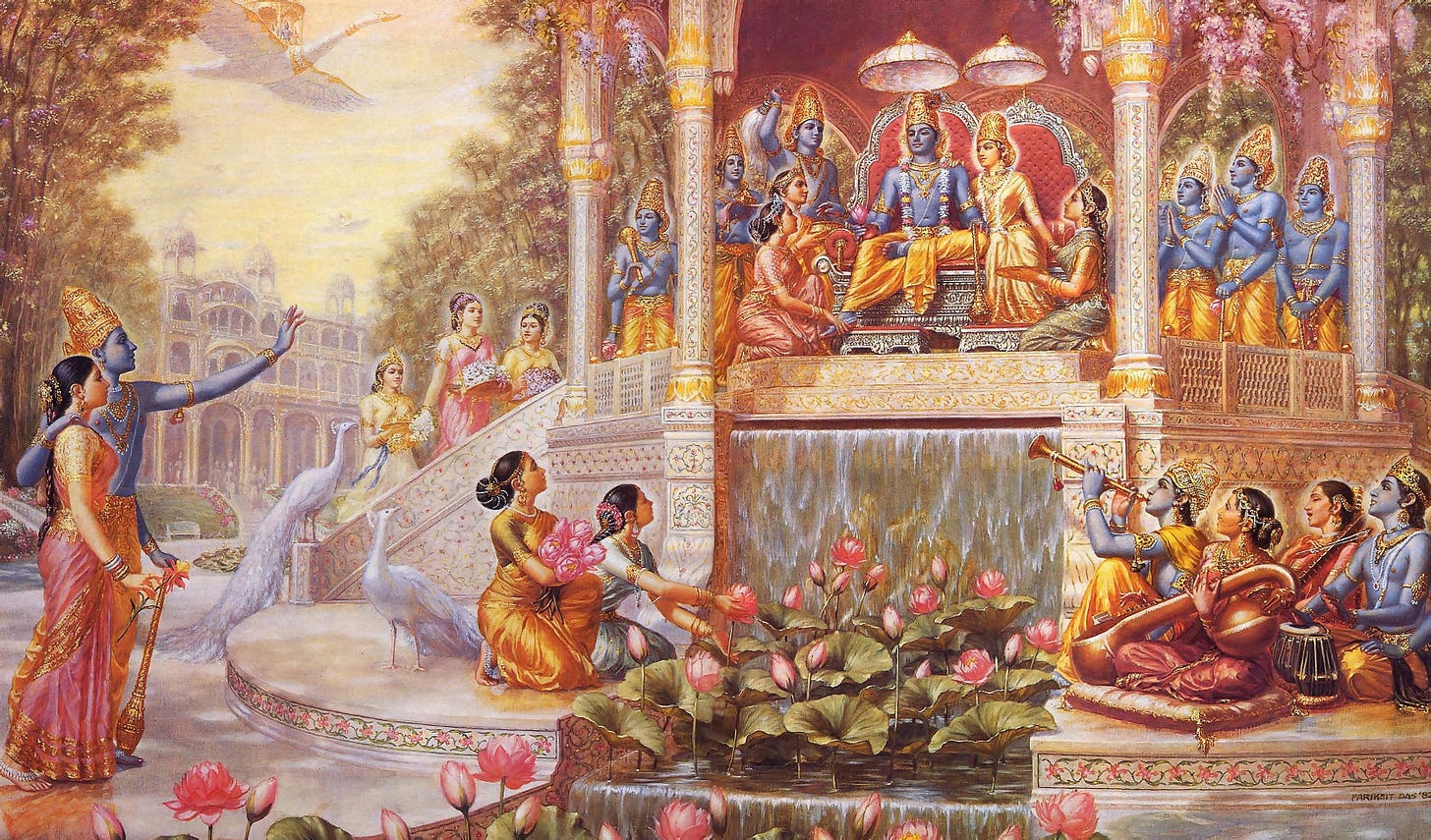When does a "murti" becomes a "deity"?
We tend to call deities that are not installed as "murtis", but what is the difference between a "deity" and a "murti"? This question is actually more difficult than it may seen.
We tend to call deities that are not installed as "murtis", but what is the difference between a "deity" and a "murti"? This question is actually more difficult than it may seen.
Christians and Muslims are very opposed to idol worship. It is very clearly condemned in their scriptures. What we may not realize that the same is found in our teachings. Caitanya Mahaprabhu was also very strongly opposed to it, just as our previous acaryas. Idol worship is as condemned in our culture as it is in Christianity and Islam.
Of course, Vaishnavism offers a higher understanding. The deity is not an idol, but the personal form of God. Not only Krsna and His form are not different (just as Krsna and His name, his pastimes, and so on) but Krsna is present in His energy, up to the smallest atom. If Krsna is not different from His form, and He is already present in material elements anyway, it's not difficult for Him to manifest in the form of the deity.
We can't see Krsna's spiritual form with our current eyes, nor touch Him with our current hands. Krsna thus appears in a form that we can interact with, for our own benefit. He appears in a form that we can see in touch just to accept our personal service. Worship of the deity is thus very different from idol worship.
In many of His purports Srila Prabhupada explains how deity worship is essential in order to break with impersonalism. We can practically see that followers of cultures that don't practice deity worship tend to think that God doesn't have a form.
It's easy thus to understand what a deity is. A deity is Krsna Himself, manifested in a form that we can see. However, what is a "murti"?
Well, that's a little more complicated. The word "murti" means "statue" in Sanskrit, nothing more, nothing less. Sometimes "murti" can be used in the sense of "deity" or "form" but often we use the world in a different way, to describe a "non-installed deity".
Once, vising a small community of devotees someone asked if it was more important to worship the "murtis" at the temple or the "deities" he had at home. I was puzzled by the question and asked what did he mean.
He explained that the deities in the temple were not installed, they were just "murtis", while his deities at home where "installed". This devotee was engaged in both worshiping in the temple and at home, but somehow in his mind he was making such a distinction. He was believing that he was worshiping statues at the temple and deities at home. I found this quite inappropriate. If one believe the deities are just "murtis", or statues then why is he worshiping them? We are not idol worshipers. If one believes it is just a statue, he should not worship it. If they are just statues, then put them in a box. If however one understands that they should be worshiped, then he should understand it is not an statue, but the Lord Himself.
One can make a form of the Lord from stone or metal and put it in the window of his shop with the purpose to sell it. At this point it's not a deity. We offer a certain respect, but we don't worship it. However, after bringing home, cleansing it and painting it, we do some ceremony to ask the Lord to come to this form. This may be a formal "installation" ceremony, or just a small kirtana, but once it's done, it's not a statue anymore, now it's the Lord. There is thus a moment when we make this switch in our minds. Now it's not a statue anymore, now it's the Lord. It's from this moment that we start worshiping.
When Srila Prabhupada established the deities of Krsna Balarama in Vrindavana, he hired local caste brahmanas to do an elaborated installation ceremony, but short afterwards he mentioned that it was just a show to convince the local population that the temple was bonafine. In reality, he said, the installation was done by the kirtana of the devotees. As soon as a devotee chants the holy names and ask Krsna to come to this form, Krsna becomes present there, it is not a matter of bathing the form with yogurt or not.
So, the question is quite simple. If it is a "murti" or statute, I should not worship it. If I'm worshiping it then I should understand that it is not a "murti" anymore, but the Lord Himself. It's one or the other, there is no middle ground. We don't worship idols.
The concept of "murti" in the sense we often use it is thus incorrect. There may be deities with higher standards of worship, or lower standards of worship, according to the worshiper and the facilities available, but there is no such a thing as a "murti" in the altar.




Very well explained with so much clarity . Prabhuji.